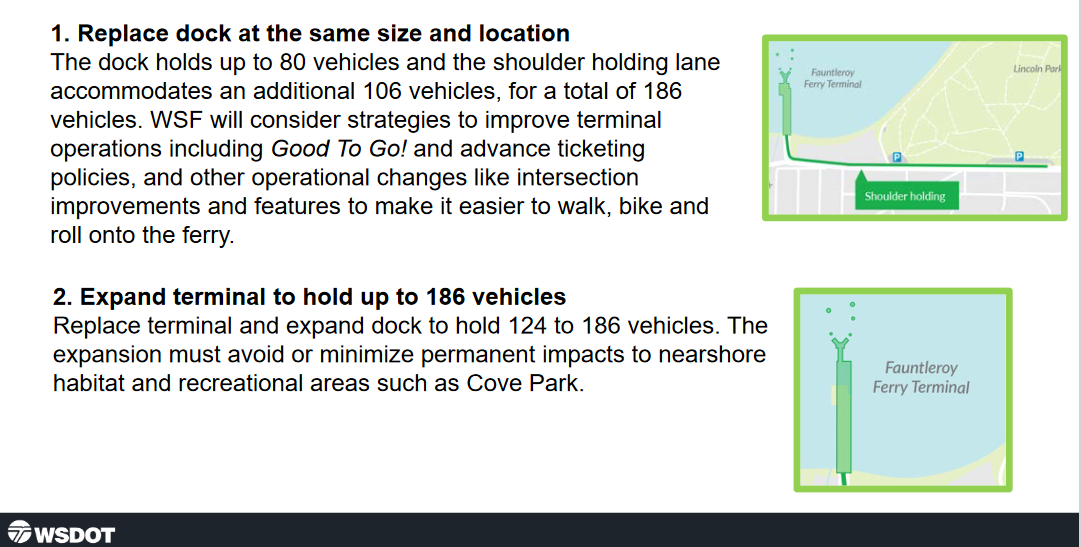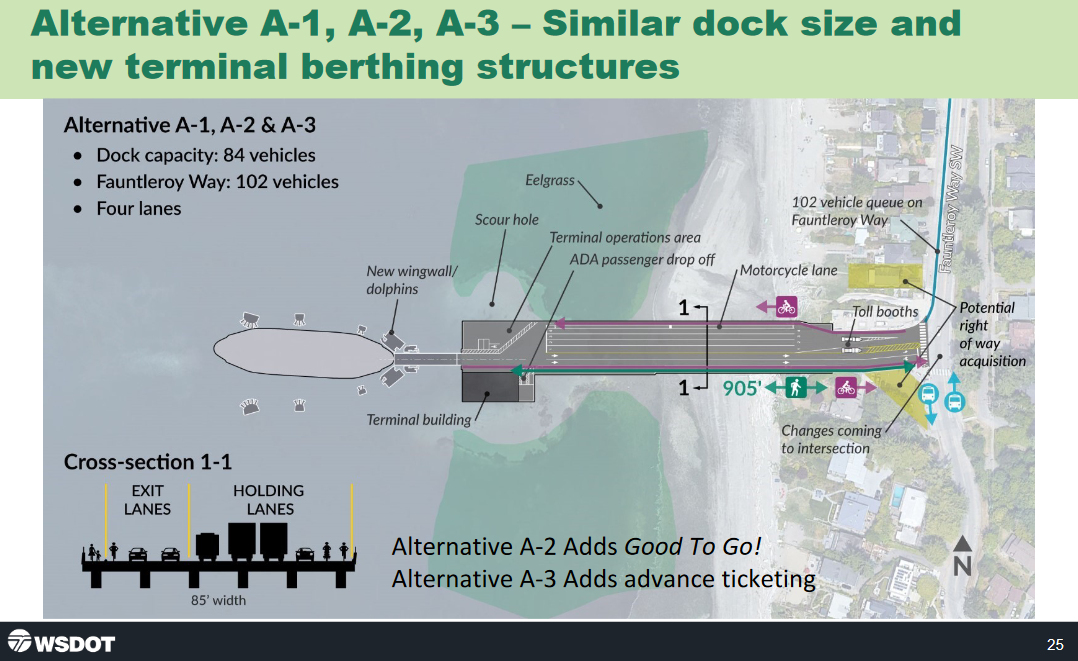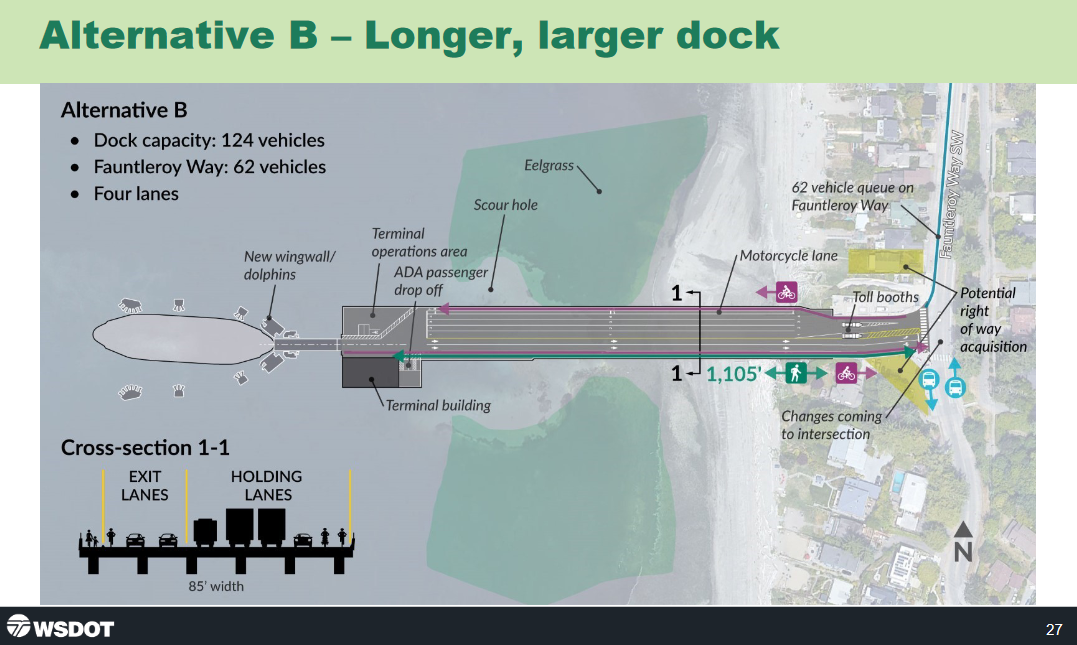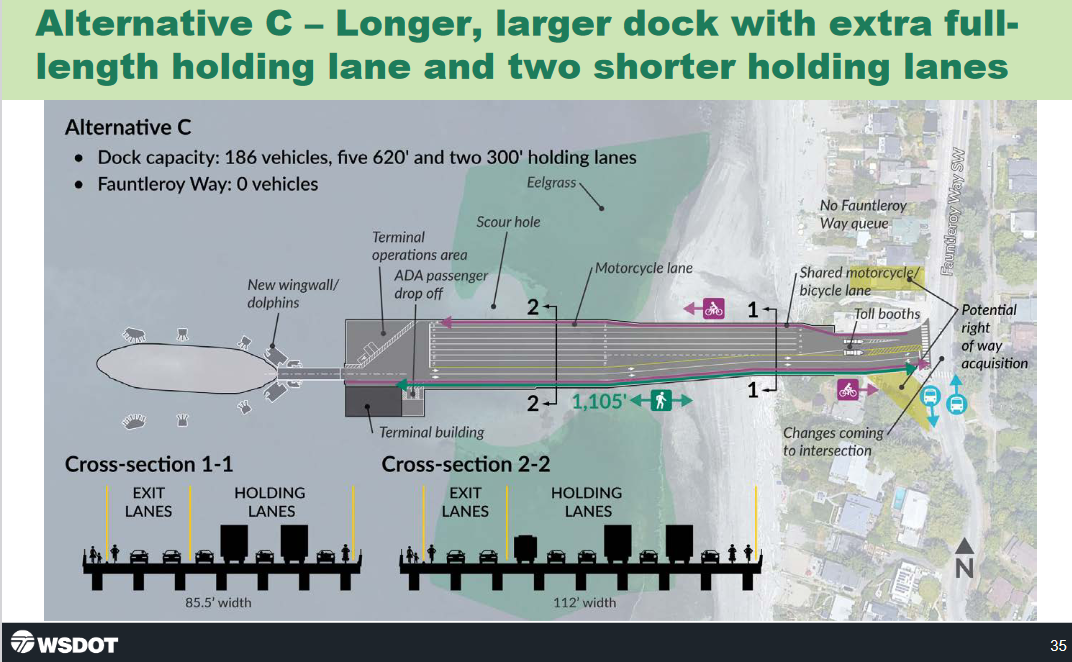This is the project timeline for the Fauntleroy Ferry Terminal replacement project.
WSDOT
Information from District 1 City Councilmember Lisa Herbold
The Fauntleroy Ferry Terminal Executive Advisory Committee, of which I am a member, met on October 18th. The Community Advisory Committee met on the 25th.
The biggest news is that it will take about a year and a half longer to begin formal environmental review. SEPA and NEPA environmental analysis required under state and federal law are now scheduled to begin in 2025. Previously, the Planning & Environmental linkages (PEL) planning study was planned to end around now, identifying different alternatives to study in SEPA and NEPA.
The additional time is for a few key reasons. First, the approach to begin SEPA and NEPA around now did not include identification of a preferred alternative. The new timeline will include one preferred alternative and one no action alternative, as required by the Federal Transit Administration. In addition, this will allow for additional study and development of alternatives, including for use of Good to Go passes used for tolls (e.g. the SR99 tunnel) and advance ticketing, as proposed by community members.
On one hand, I’m glad the additional time will allow for more serious consideration of the community options.
I have this concern because all the options are at least 18 feet wider, and some of the options that include the current vehicle capacity include a slightly longer dock.
The SEPA/NEPA review is scheduled for 2025 through 2027.
There are several potential options includes in Level 3 of the PEL study, based on two overarching concepts: 1) maintaining the current vehicle capacity of the terminal, and 2) expanding vehicle capacity. It’s important to limit the impact on the community; most ferry terminals are not in residential neighborhoods

Another new feature of the options is that they include changes to the intersection adjacent to the terminal, though details aren’t yet available.
Option A includes a dock with four lanes, and capacity for 76 vehicles, with 110 spaces on Fauntleroy Way. The dock would be 8-feet shorter than the current dock, and 18 feet wider.
Alternatives A-1, A-2 and A-3 match the existing capacity of 84 vehicles. A-2 adds use of Good to Go; A-3 adds advance ticketing. All three include a dock that is 41 feet longer than the current dock. Options A, A-1, A-2 and A-3 are 18 feet wider than the current dock; the report states this is to provide space for a large truck to turn onto the dock.

Alternative B is a longer and larger dock, with 124 vehicles, with capacity for 62 on Fauntleroy Way, and four lanes. It is 18 feet wider, and 100 feet longer than options A-1, A-2, and A-3.
B-1 has capacity for 155 vehicles, and five lanes. It is 27 feet wider than the current dock.
B-2 has four full lanes, and two partial lanes, with the same 155 vehicle capacity, with 31 spaces on Fauntleroy Way. It is 250 feet longer than the existing dock, and 36 feet wider.
B-3 has capacity for 124 vehicles, with three lanes, and two partial lanes. It is 226 feet longer than the current dock, and 36 feet wider.

Alternative C includes capacity for 186 vehicles, with five 620’ and two 300’ feet holding lanes, and no space on Fauntleroy Way. It is 240 feet longer and 45 feet wider than the existing dock.

Here’s a link to the WSDOT Summary of Level 3 Alternatives, with additional details. Here’s a link to the slides shared at the Community Advisory Group meeting.